In this season of colds and flu (some of us have not escaped), this article seems appropriate reading for both gardeners and historians. It was researched and written by my husband, Joe Whitfield, and has appeared in print in a local newspaper. Some of the plants mentioned may already be a part of your garden but please read the disclaimer. This article is for your wintertime enjoyment during these long, dark nights.
DISCLAIMER: Don’t try this at home folks; it’s probably one reason they didn’t live long back in those days.
Back in the days when there wasn’t a drugstore on every corner or doctors handy, pioneers tried a little bit of everything when they got sick. There was a notion called the Doctrine of Signatures. In this theory, the shape, color or order of a plant was said to be an indication of its medical use.
An example of this would be ginseng; in Chinese it’s Jin-Chen (man-like). In Indiana this is a multi-million dollar business. Which, by the way, there is a season for hunting it and you need a license to collect ginseng.
No only did they use native plants for themselves but for their animals. For instance:
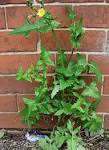 Sow Thistles – This was used for high blood pressure in animals. Sows and nursing mother’s were given this to up the production of milk. It was also used for wheezing and shortness of breath.
Sow Thistles – This was used for high blood pressure in animals. Sows and nursing mother’s were given this to up the production of milk. It was also used for wheezing and shortness of breath.
Mullein – Leaves were used for green dyes, tea for headaches, burned near animals that were wheezing, and also as rouge for cheeks (it was also called Quaker Rouge).
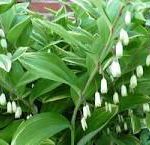 Solomon’s Seal – Not only used when dried to repel spider and snakes but in a tea for a contraceptive.
Solomon’s Seal – Not only used when dried to repel spider and snakes but in a tea for a contraceptive.
 Rattlesnake Master – This plant was thought to cure bites by rattlesnakes (it doesn’t work). We have this plant growing in the Prairie section at Beckenholdt (Editor’s note. That would be a park in the Greenfield Parks and Recreation system).
Rattlesnake Master – This plant was thought to cure bites by rattlesnakes (it doesn’t work). We have this plant growing in the Prairie section at Beckenholdt (Editor’s note. That would be a park in the Greenfield Parks and Recreation system).
Basil – Not only was this used for flavoring but also for indigestion and skin conditions and as a relief from diarrhea and coughs.
Bee Balm – Used for colic, stomach aches and intestinal worms.
Black-eyed Susan – With a tea made from the roots, you could expel worms and treat a cold. The juice from the roots was used for earache.
 Catalpa Tree – It’s leaves were used as a poultice for wounds. A tea from the seeds was used for bronchitis and asthma. From the bark, they made a tea to make an antiseptic and a laxative and sedative, and for intestinal worms and snake bite.
Catalpa Tree – It’s leaves were used as a poultice for wounds. A tea from the seeds was used for bronchitis and asthma. From the bark, they made a tea to make an antiseptic and a laxative and sedative, and for intestinal worms and snake bite.
False Solomon Seal – The roots of this plant were burned to cure insanity and to quiet a crying child. Take the dry powdered roots and you could stop external bleeding, plus rashes and itch. The fruits of this plant were eaten to prevent scurvy.
Catnip – A weak tea was made for a colicky baby.
Jewel Weed -Also known as Touch-Me Not, the leaves were used to relieve itching (this one will work). Editor’s note: I have used this after brushing against Stinging nettles. In the natural world, these two plants grow near each other. How fortunate for those of us who are clumsy.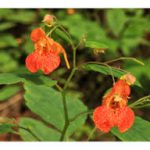
Blazing Stars – A tea from the roots was used to cure dysentery. The corms taste like carrots in the early spring.
Butterfly weed – The taproot was used for pleurisy and asthma.
Fleabanes – This plant was used as a cure 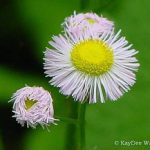 for diarrhea, kidney stones, diabetes and a host of other ailments.
for diarrhea, kidney stones, diabetes and a host of other ailments.
Wild Bergamot – A tea made from the leaves was used for colic, flatulence, colds, fever and nosebleeds.
If you were lucky enough to live close to a wetland area, this gave you an opportunity to use some of these plants.
Cardinal Flower – A tea from the root or leaves was used as remedies for stomach ache, fever, headache and colds. It was also used to expel worms, soothe the nerve, to cure syphilis and typhoid fever. At times it was also mixed in a love potion.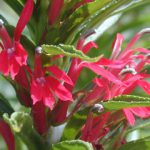
Jack-in-the-Pulpit – The corm of this plant is poisonous, however, when dried, it can be eaten and used to treat colds and bronchial ailments.
Joe-Pye-Weed – Used to induce sweating in Typhus fever. This plant was also used for urinary ailments.
Lady’s Slippers – The roots of this plant have a sedative property and teas were made to calm the nerves, ease insomnia, depression, menstrual disorders, and treat epilepsy.
Skunk Cabbage – This was made into a salve for rheumatism, treatment of lock jaw (tetanus), epilepsy and seizures. Also used for headaches and made into a tea for use as a contraceptive.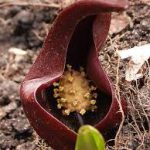
I could keeping going for a couple more pages but I won’t. As you can see, the pioneers used just about everything that grew to some use- most of it wrong- but to some use. As I said in the beginning: Don’t try this at home.